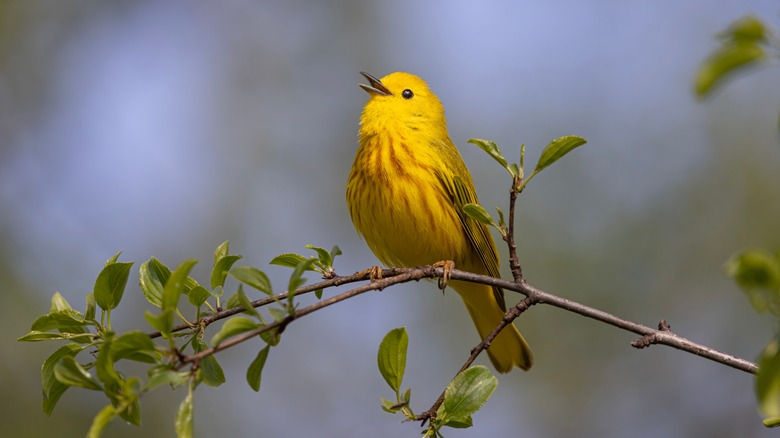The Fast-Growing Weeping Tree That'll Help Attract More Birds To Your Yard
There is something about a weeping tree that just feels particularly whimsical. Adding one to your lawn or garden is an excellent way to incorporate a more fanciful aesthetic. Unfortunately, some of the most popular weeping trees — like weeping willow — are non-native and may even be considered invasive. Luckily, there are plenty of native weeping trees to choose from, including another willow: pussy willow. Not only does this cute tree feature unique fuzzy flowers and grow quickly, it will also attract birds to your yard — and not because it produces any messy berries or seeds that will require your cleanup efforts. Pussy willows bloom when many birds are nesting, providing an easy source of protein by attracting insects drawn to their flowers.
If you've been looking for a native weeping tree that doesn't take ages to grow, brings a unique look to your yard, and attracts birds to your property, a pussy willow should check all your boxes. For those who live in USDA hardiness zones 4 through 8, these beautiful trees are underrated gems.
How to admire and grow a pussy willow tree
Pussy willows are traditionally upright trees. However, there is a weeping variety known as weeping pussy willow (or goat willow) you can easily seek out. Pussy willows' branches produce small fuzzy catkin flowers that resemble the paw of small kittens, which accounts for the tree's name. Hummingbirds utilize these soft tufts for building their unique flexible cup nets (try building a hummingbird nest box for them) and several shrub-nesting bird species — including American goldfinches and yellow warblers — choose to build their nests within the pussy willow tree. Since pussy willows bloom early in the spring, they are also an important source of food for both insects and the birds that hunt that them at a time when nourishment is still scarce.
Planting a pussy willow tree is as simple as procuring a sapling and choosing a spot that receives partial to full sunlight (preferably in autumn). Dig a hole twice the size of the sapling's root ball, plant it, cover its base with mulch, and water it thoroughly. Caring for your pussy willow is easy: keep its soil consistently moist and prune away any dead or damaged branches each spring before new growth begins. You can also cut small tufted branches to use in unique cut flower arrangements.

